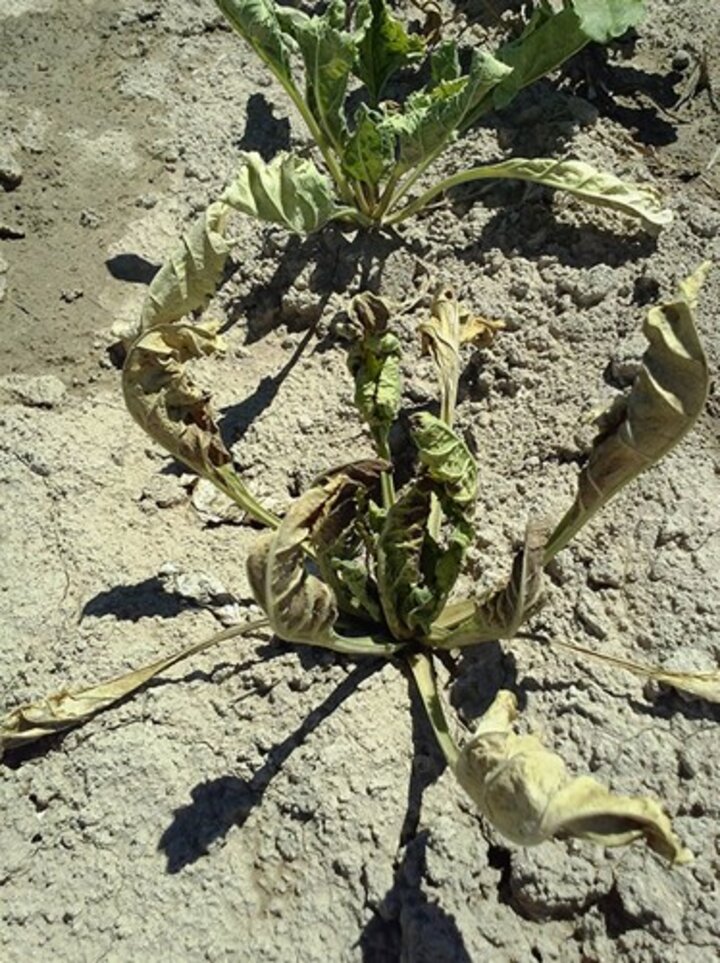A new sugar beet germplasm breeding line developed by U.S. Department of Agriculture (USDA) scientists could usher in new varieties of the sugar crop that can better withstand the sugar beet curly top virus.


Small insects called "beet leafhoppers" transmit the virus, wreaking cellular havoc that can result in yellow, inwardly curled leaves, stunted growth and other tell-tale signs. Severe outbreaks of curly top disease can reduce sugar beet yields by up to 30%.
Spraying insecticides can prevent leafhoppers from transmitting the virus, but the preferred approach is to plant sugar beet varieties that naturally resist the pathogen, notes Imad Eujayl, a molecular biologist with Agricultural Research Service (ARS) in Kimberly, Idaho.
Together with ARS plant pathologist Carl Strausbaugh and members of the Beet Sugar Development Foundation , Eujayl developed and released new germplasm line KDH13. The work was part of an ongoing sugar beet improvement program at the ARS Northwest Irrigation and Soils Research Lab in Kimberly.
KDH13 resulted from "gynogenesis," a tissue-culture technique in which the new sugar beet line began from the regenerated egg-cell tissue of a single, unfertilized female parent plant known to be resistant to the virus. In greenhouse and nursery tests, mature plants of KDH13 outperformed Hilleshog PM90, a top resistant cultivar used for comparison.
Genetically sequenced since, the new germplasm line is available to beet breeders and seed companies as a source of resistance genes for breeding into commercial varieties to improve tolerance to the virus, according to Eujayl. Technical details about KDH13 appeared in the January 2016 issue of the Journal of Plant Registrations .
Read more about this work in the March 2016 issue of AgResearch . ARS is USDA's principal intramural scientific research agency.
